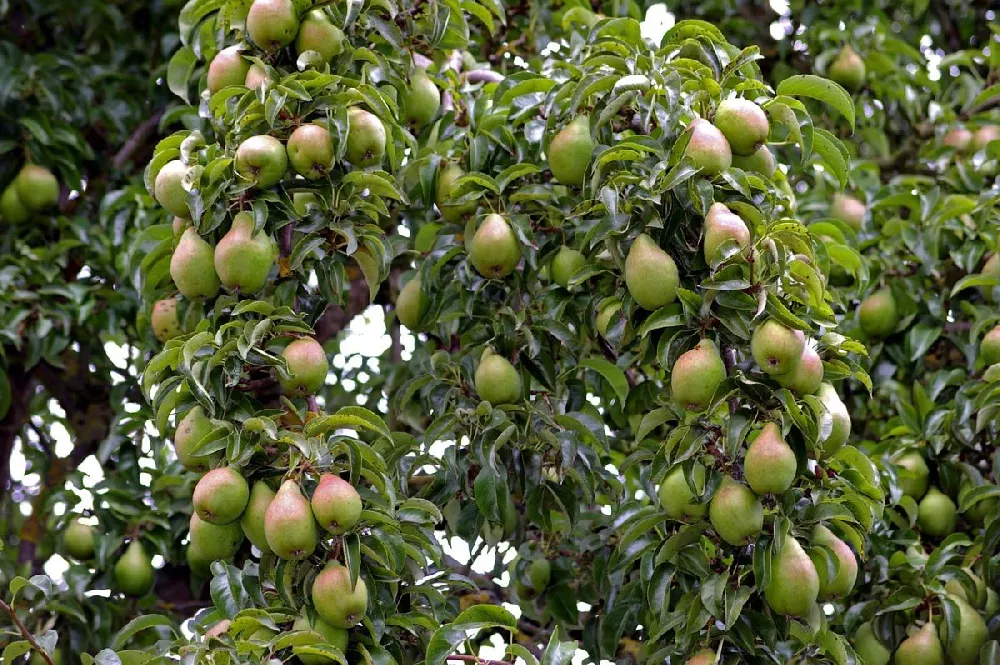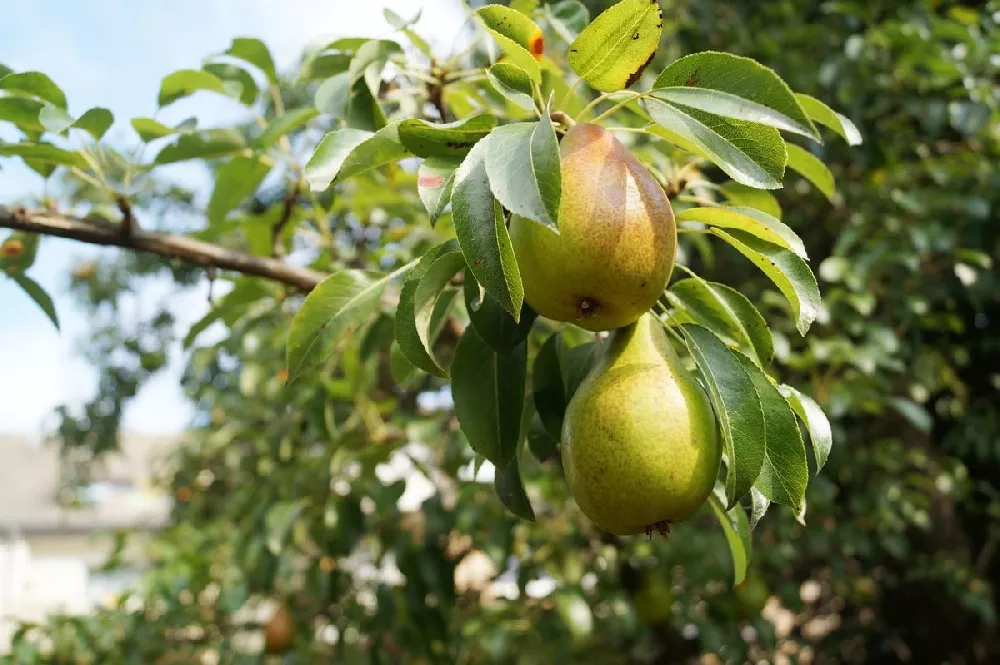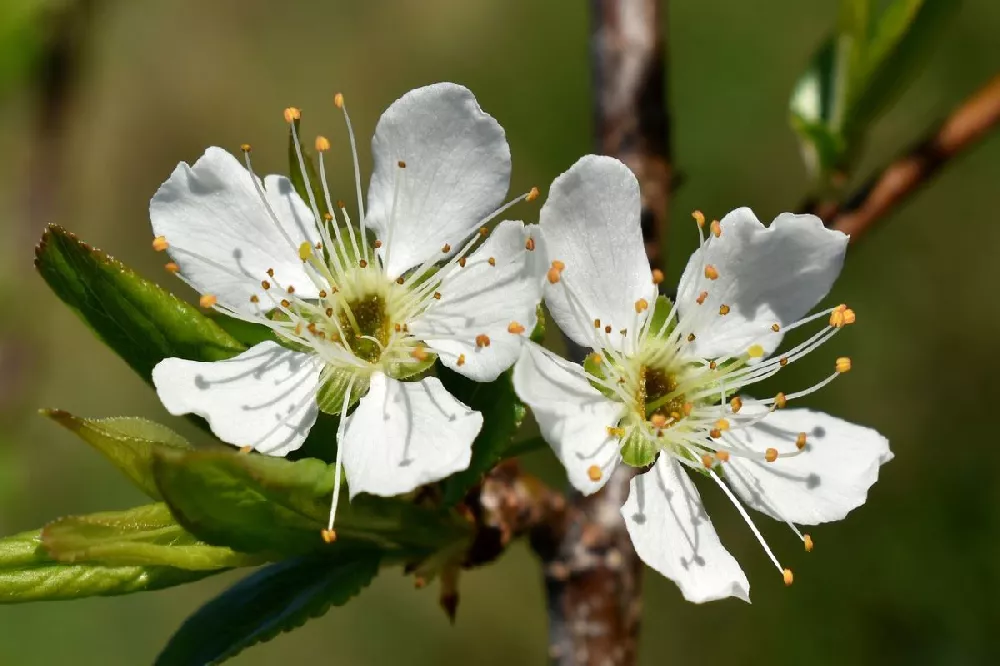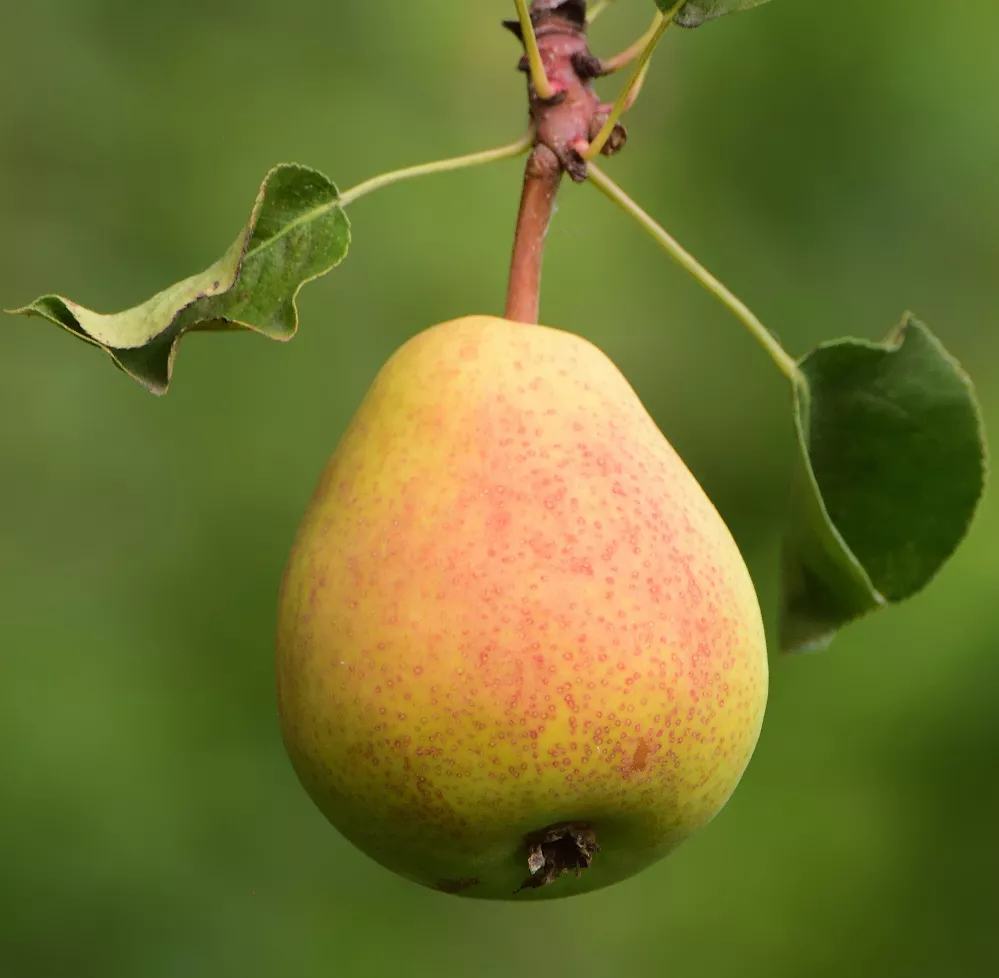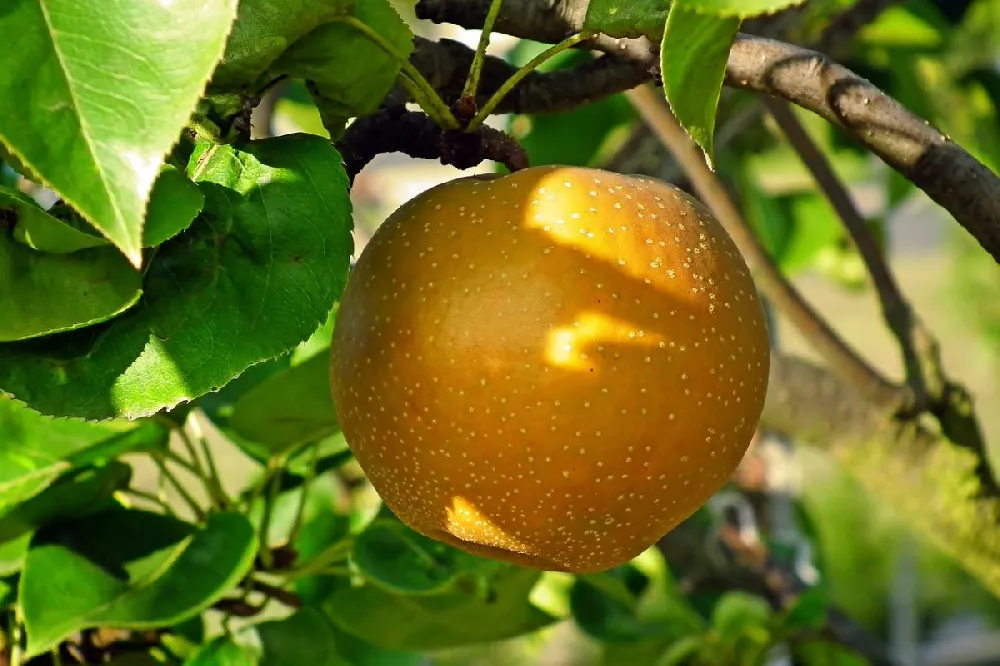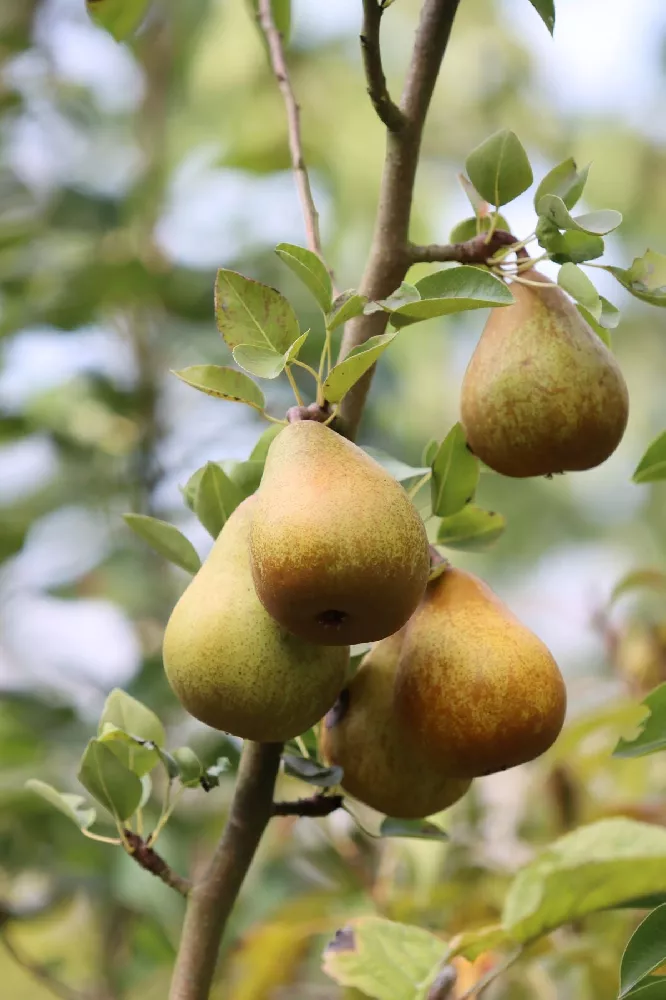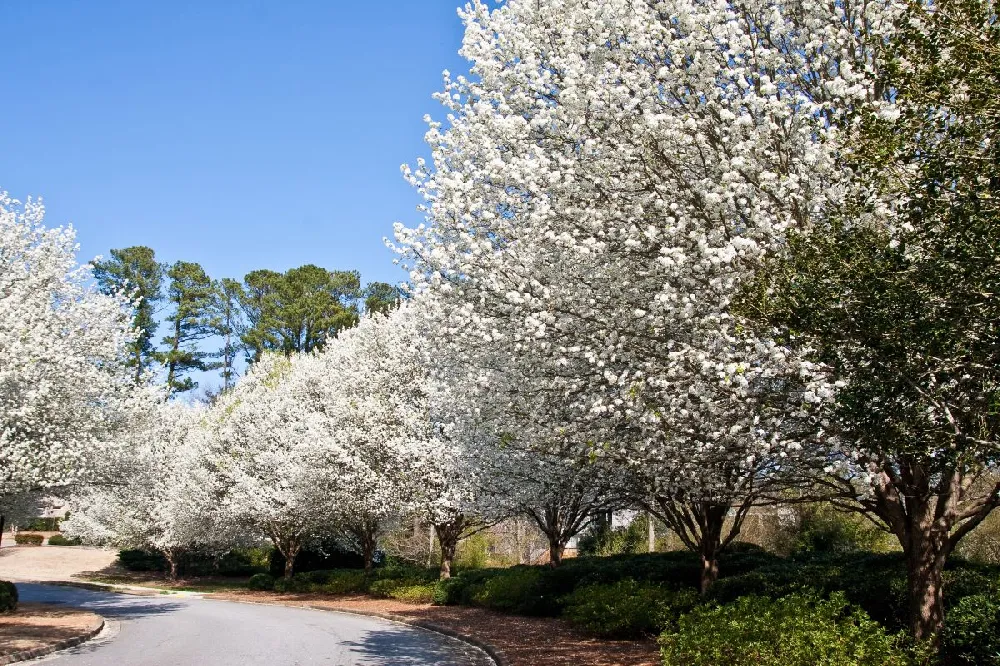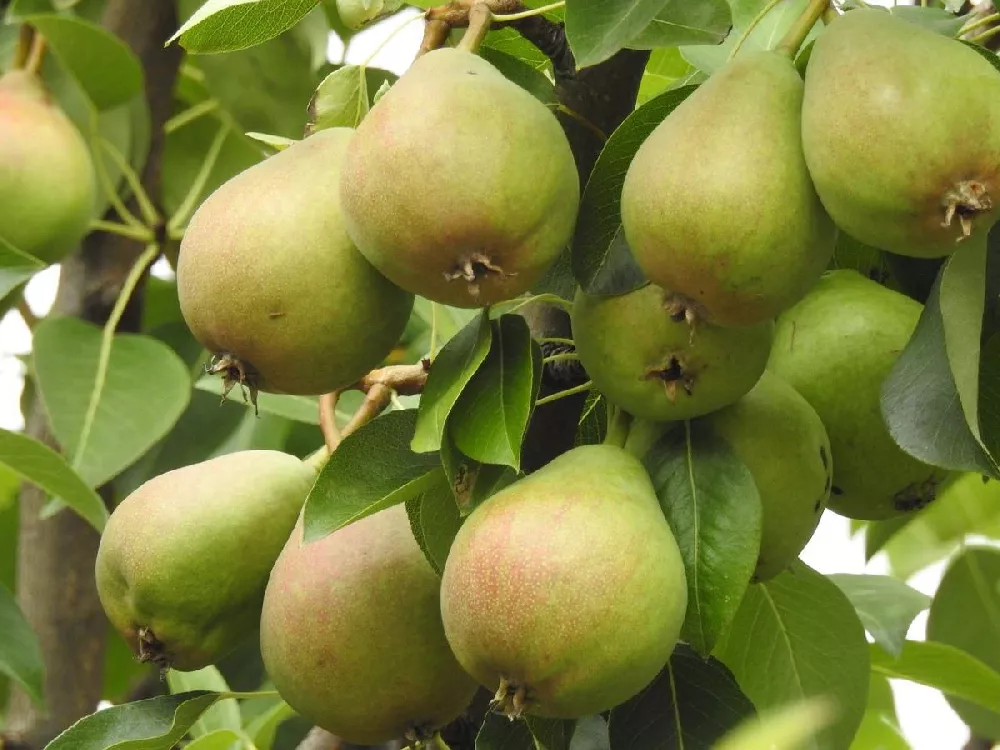- Home >
- Flowers >
- Trees and Plants with White Flowers >
- Warren Pear Tree
Warren Pear Tree for Sale - Buying & Growing Guide
If you are one of the many gardeners who are daunted by the thought of raising fruit trees, take a good look at the Warren Pear Tree, Pyrus 'Warren.' Why? Because they are, simply, one of the easiest fruit trees to grow, needing little extra care and with excellent resistance to the most common pear tree diseases. Added to that is the fruit, which is sweet and buttery, without any of the grittiness that plagues many types of pears. These are considered dessert pears and great for fresh eating and cooking. The Warren Pear is a medium-sized tree that looks great even in smaller yards, and it is cold-resistant, capable of being grown as far north as New England. Need more reasons to purchase yours today? Here are three:
- Warren Pears are self-fertile and do not need a second tree to bear fruit.
- They are an American variety that thrives in most U.S.-based gardens.
- Resistant to fire blight, which is common with many pear varieties.
Enter your zip code to find nearby stores that may carry this plant.
Plant Care
Sunlight

Your Warren Pear Tree will grow best in full sun — six or more hours of direct sunlight a day.
Watering
Warren Pears need about one to two inches of water a day either from rain or supplemental watering.
Fertilizing

Fertilize in early spring with a product formulated for woody plants, such as a rose fertilizer.
Planting and Care
Planting instructions
Site your Warren Pear in soil that drains well and receives at least six hours of direct sunlight a day. Unpot your sapling and tease out any encircling roots, which can girdle the tree and slowly kill it. Place the roots in a bucket of water while you dig a hole that’s as deep as the root ball and twice as wide. Place the tree in the hole, spreading out the roots. Holding it upright and steady, fill in around the roots with topsoil, tamping down as you go to eliminate air pockets. Water thoroughly. Apply a two to three-inch layer of organic mulch such as bark chips around the root zone to conserve moisture and hinder weed growth but keep it from touching the trunk to avoid problems with rot.
Watering and nutrients
When newly planted, water your tree every few days. Once you see signs of robust new growth on the branches, taper back your watering to around once a week, giving the tree one to two inches of water each time. Stop supplemental watering once you’re past the first frost in the fall. Fertilize in early spring with a balanced, slow-release fertilizer, such as a 13-13-13 formula, that’s designed for fruit trees. If you’ve planted your tree in good, fertile soil, you shouldn’t need to fertilize it until it starts bearing fruit.
Pollination
Unlike many fruit trees, Warren Pears are self-fertile. This means you will have a harvest even if you only have one tree. Having said that, your tree will produce fruit more profusely if you do plant several of the trees in near proximity to each other.
Pruning
Prune out dead, diseased or damaged branches whenever you see them. In early spring before bud break, do a general maintenance pruning of your tree. You want to have a single strong central leader, or branch, that extends upwards from the trunk. Prune out any competing vertical branches. Also, cut out branches that rub against each other. Lateral branches should spread out horizontally around the tree, spaced about four to five inches apart. Make slanted pruning cuts just above a bud that is facing outward.
Pests and diseases
Pests that may appear on your pear tree include scale insects, leafrollers and aphids. A healthy, well-cared-for tree should be able to fight off most infestations. Releasing beneficial insects such as ladybugs and lacewings can also help control pests organically. The most common disease of the pear tree is fire blight, but the Warren Pear is highly resistant to this. If you see brown or black spots appear on the leaves, with areas on the stem turning black and sunken, you may have leaf blight, which can be controlled with a copper fungicide.
Harvesting
Most pears are harvested while they are still firm and then allowed to ripen further once they have been picked. Your Warren Pear’s fruit should be ready for picking in August or later, depending on your location. The fruit will start taking on a pale pink blush and will come off the tree easily. Set the fruit aside for several days and then try one to see if it’s sweet. Store your fruit in a cool location such as an unheated garage or basement. Bring them out when you’re ready to eat them and allow them to ripen for several days. They may be stored for up to several months.
Achieving maximum results
Properly pruning a fruit tree can seem complex, but it doesn’t have to be difficult. Cutting back the tree results in stronger growth and more prolific fruit. In addition to our suggestions above, here are a few more things to watch for when you prune: avoid branches that come off the main leader at an acute angle. These can split easily. The strongest branches will be those that are nearly horizontal to the ground; when pruning, keep those that are at 10 o’clock and 2 o’clock positions. Also, remove any branches that are growing toward the center of the tree. Keeping the canopy open to light and air is one way to achieve strong growth. Prune all lateral branches back by about one-quarter of their length to encourage side branches.
FAQs
Where can I grow a Warren Pear Tree?
These sturdy trees are hardier than most and can be grown in colder climates that would not work for other pear varieties. They can handle temperatures down to -10 degrees Fahrenheit, in USDA hardiness zones five through nine. That means they can be grown as far north as coastal New England and as far south as mid-state Florida.
How big do Warren Pears get?
A mature Warren Pear will have a height of 15 to 20 feet, with a width of about the same. Keep this in mind if you're planting more than one, or if you are planting your tree near a house or other structure. Also, avoid planting them under any low-hanging overhead wires or cabling.
Can Warren Pears be eaten right off the tree?
Of course! They have a fresh, sweet taste and are not gritty like some pears. They are also excellent when used in cooking, especially for desserts, as well as jams, jellies and compotes of all types.
Compare Similar Products
You can't add more Product Name - Product size to the cart.
OK